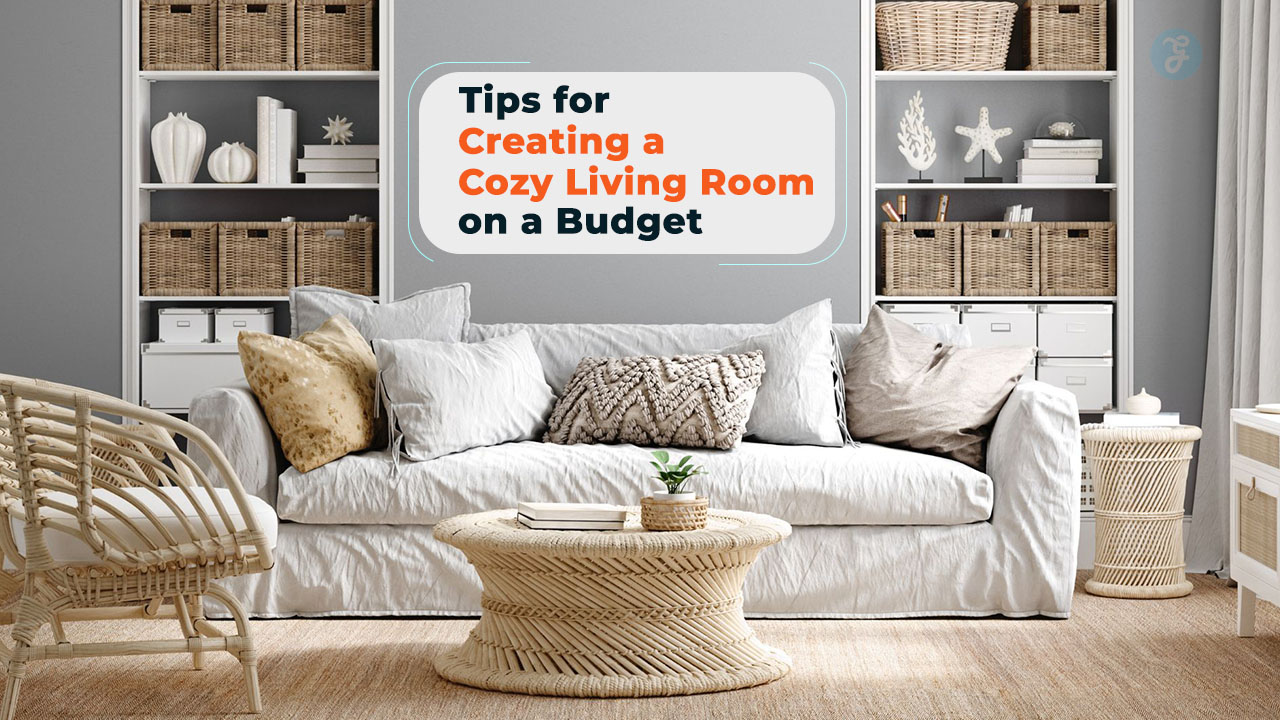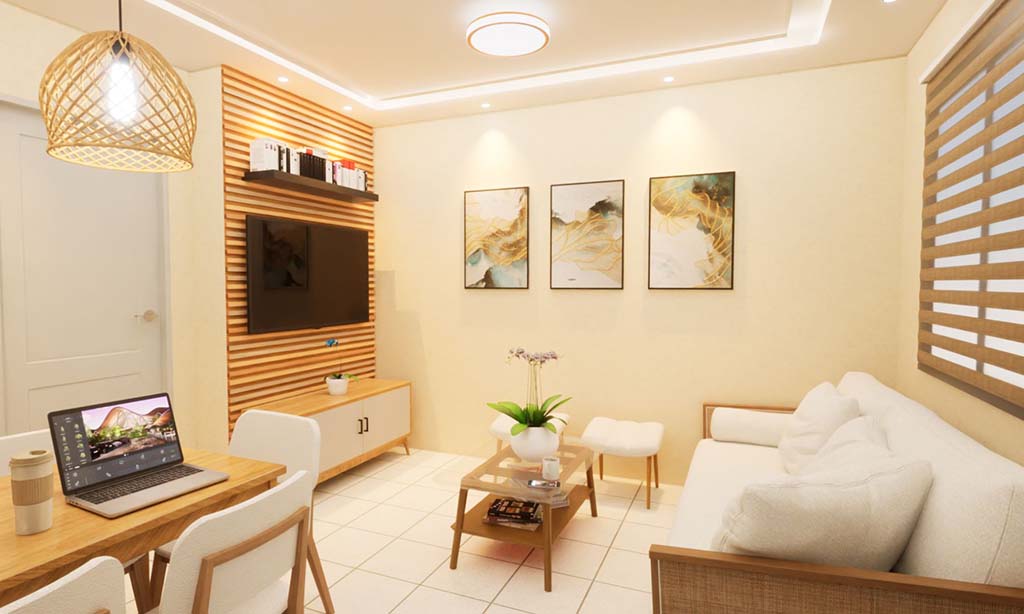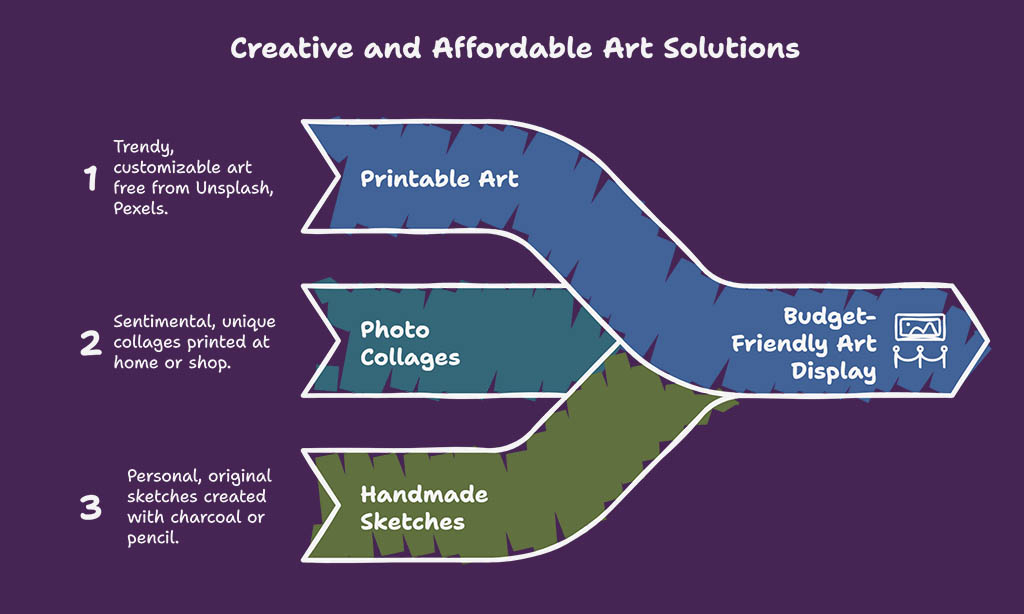A cozy living room doesn’t have to come with a hefty price tag. Whether you’re living in a small apartment, moving into your first home, or simply refreshing your existing setup, creating a warm and inviting space is entirely achievable on a modest budget. The secret lies in being creative, resourceful, and intentional with your design choices.
In this comprehensive guide, we’ll walk you through 9 tips for creating a cozy living room on a budget. Each tip offers practical ideas backed by design principles, affordable solutions, real-life examples, and current interior trends. You’ll learn how to use lighting, textiles, layout, nature, and personal style to turn even the simplest space into a sanctuary.
These strategies are rooted in functionality, aesthetic value, and budget-conscious thinking. Let’s transform your living room into a cozy retreat you’ll love to come home to.
What You’ll Learn in This Guide: 9 Tips for Creating a Cozy Living Room on a Budget
In the following sections, you’ll find practical, actionable advice for crafting a cozy living room on a tight budget. These tips are tailored for anyone looking to maximize comfort and style without overspending. You’ll learn how to use lighting, textiles, layout, and even scent to elevate your space. Whether you’re in a city apartment or a family home, these ideas are designed to inspire budget-savvy improvements.
1. Use Soft Lighting to Set the Mood
Lighting is one of the most transformative elements in interior design. While often overlooked, lighting impacts how colors appear, how textures feel, and even how we emotionally experience a room. Warm, layered lighting is known to evoke feelings of comfort and intimacy. When chosen correctly, lighting not only enhances visibility but also creates a soothing atmosphere that makes people feel welcome.
In recent years, there’s been a shift toward softer, mood-enhancing lights that mimic natural daylight. Homeowners and renters alike are leaning into this approach, opting for floor and table lamps with warmer color temperatures to encourage relaxation. Effective lighting can turn a bland, uninviting room into your favorite spot in the house.
According to a 2023 Houzz survey, 62% of homeowners who renovated their living rooms placed lighting updates as a top priority, primarily to improve ambiance.
Tips for Budget-Friendly Lighting:
- Replace cool-toned bulbs with warm LED alternatives (2700K–3000K).
- Add dimmable bulbs or smart lighting for flexible brightness.
- Mix ambient, task, and accent lighting for a layered effect.
- Use fairy lights, salt lamps, or paper lanterns for added warmth.
Lighting Layer Table:
| Type of Lighting | Purpose | Budget Option Examples |
| Ambient (general) | Even room illumination | Ceiling-mounted LEDs, floor lamps |
| Task lighting | Focused activity lighting | Desk lamps, reading lights |
| Accent lighting | Adds warmth and interest | String lights, wall sconces, uplights |
Example: Use a $15 smart bulb (like Wyze or TP-Link) to change the room’s hue via your phone, creating cozy moods with ease.
2. Add Layers with Textiles
Textiles bring softness, warmth, and dimension to any room. By layering fabrics in different weights and textures, you add visual and tactile coziness. This strategy is especially effective in neutral spaces where texture can substitute for color. It helps create an inviting, tactile-rich environment that feels instantly comforting the moment you step in.
Textiles also allow for seasonal versatility—you can easily switch out cushion covers or throw blankets depending on the weather or your mood. Think breezy linens in summer and plush velvets in winter. Best of all, many of these options are incredibly affordable or even DIY-friendly.
A recent study from the American Society of Interior Designers found that textured furnishings like knit throws and boucle pillows contribute to emotional comfort.
Budget Textile Ideas:
- Use mismatched throw pillows in contrasting fabrics like cotton, velvet, and faux fur.
- Repurpose old bed sheets or scarves as curtain panels or slipcovers.
- Buy seasonal clearance items (especially winter throws) and use year-round.
Textile Layering Table:
| Item | Cozy Benefit | Budget Tip |
| Throw pillows | Adds softness and color | Use covers to swap out seasonally |
| Blankets | Offers warmth and decorative flair | Layer on chairs and sofas |
| Rugs | Defines space, insulates floors | Buy secondhand or use rug overlays |
| Curtains | Controls light and warmth | Hang higher and wider for luxury on a dime |
Example: Combine a neutral woven area rug with a smaller patterned one on top—this creates designer-level layering without overspending.
3. Rearrange Furniture for Better Flow
One of the most cost-effective ways to enhance coziness is to rethink your room layout. A thoughtful furniture arrangement improves traffic flow, maximizes natural light, and encourages social interaction. It’s not always about adding more furniture—sometimes the most impactful change is simply rearranging what you already have.
By shifting a sofa to face a focal point like a fireplace or television, you can anchor the space and make it feel more balanced. Adding side tables between chairs encourages people to gather and stay awhile. Good flow also supports functionality—ensuring your room isn’t just attractive, but usable.
According to Apartment Therapy, homeowners who rearrange furniture report a higher sense of contentment in their living space—even without buying new items.
Furniture Arrangement Tips:
- Float furniture away from the walls to create intimate groupings.
- Anchor the room with a rug to define sitting areas.
- Angle chairs slightly to soften rigid lines.
- Place a mirror to reflect light and create visual expansion.
Furniture Flow Table:
| Technique | Benefit | Zero-Cost Tip |
| Floating furniture | Creates conversation zones | Use area rugs as anchors |
| Balanced layout | Reduces visual clutter | Balance large and small pieces |
| Clear walkways | Enhances usability | Keep at least 2.5 ft between furniture |
Example: Try creating an “island” seating arrangement in the center of your living room to make it feel like a cozy, contained retreat.
4. Incorporate Natural Elements
Biophilic design—a 2024 interior trend—involves integrating natural materials and plant life indoors to improve well-being. Greenery and organic textures not only soothe the senses but also purify air and add charm. It’s a design style that promotes harmony between indoor environments and the natural world.
Even small touches like a wooden bowl, jute rug, or bamboo tray can have a powerful visual and emotional effect. Plants add freshness, reduce indoor pollutants, and visually soften hard edges. Natural elements can create a sanctuary-like space that feels both grounded and elegant.
Houseplants have been shown to reduce stress and increase productivity, according to the Journal of Physiological Anthropology.
Affordable Natural Decor Options:
- Group small plants on windowsills or bookshelves.
- Display pebbles or seashells in a glass bowl.
- Use natural fibers like rattan, hemp, or jute in accessories.
Natural Elements Table:
| Element | Emotional Impact | Budget Source |
| Plants | Enhances calm, improves air | Cuttings from friends or budget nurseries |
| Wood accents | Adds warmth and rustic charm | Thrift stores or repurposed furniture |
| Jute/wicker | Creates organic, earthy look | Discount home stores or DIY |
Example: Use a mix of potted succulents and recycled wooden crates for both greenery and storage.
5. Create a Gallery Wall or DIY Art
Art is one of the easiest ways to personalize a space and make it feel complete, yet it often feels out of reach due to cost. Fortunately, with a bit of creativity and some basic supplies, you can make your own wall art or create a curated gallery wall that speaks volumes about your style. Even the most minimal living rooms can be elevated by the addition of expressive wall decor.
Gallery walls add character, act as conversation starters, and visually fill empty space in an intentional way. They also give you flexibility—you can mix and match prints, illustrations, quotes, and personal photos without the pressure of being “perfect.” The process can also be fun and collaborative, involving your family or roommates in the curation.
With platforms like Pinterest, Canva, and Etsy offering digital downloads, the options for printable art are endless. You don’t need to be an artist to display creativity—you just need an eye for arrangement and an openness to experimentation.
Budget-Friendly Art Ideas:
- Frame fabric remnants or wallpaper samples.
- Create black-and-white photo collages.
- Use clipboards or binder clips for an industrial-chic display.
Gallery Wall Table:
| Art Type | Aesthetic Appeal | Low-Cost Source |
| Printable art | Trendy and customizable | Free from Unsplash, Pexels |
| Photo collages | Sentimental and unique | Print at home or local shop |
| Handmade sketches | Personal and original | DIY with charcoal or pencil |
Case Study: A Toronto student used old maps, postcards, and paint swatches to create a vintage-themed gallery wall for under $20.
6. Embrace Thrifted and Secondhand Finds
Secondhand furniture and decor are budget-friendly and environmentally responsible. Thrifting offers the chance to find unique, character-rich pieces that aren’t mass-produced. The charm of a well-worn coffee table or vintage mirror often surpasses that of new items, bringing warmth and a story to your space.
Beyond saving money, thrifting encourages a mindset of sustainability and creativity. Whether it’s repainting a side table or reupholstering a chair, secondhand items often serve as excellent DIY projects. In addition to traditional thrift stores, digital platforms like Facebook Marketplace, Craigslist, and OfferUp expand your sourcing opportunities.
According to ThredUp’s 2024 Resale Report, 1 in 3 consumers now prioritize secondhand shopping as part of their home decor strategy—proving it’s no longer just a trend, but a shift in mindset.
Where to Find Affordable Decor:
- Explore local Facebook buy/sell groups.
- Use the OfferUp app for localized deals.
- Check Habitat for Humanity ReStores for furniture and fixtures.
Thrifted Decor Table:
| Item | Cozy Value | Shopping Tip |
| Vintage mirrors | Expands space, reflects light | Find ornate frames for added charm |
| Old trunks | Adds storage + rustic decor | Double as coffee or side tables |
| Side tables | Fills gaps, adds layers | Look for solid wood options |
Example: A $10 flea market side table can be sanded and painted to match your living room aesthetic perfectly.
7. Add Personal Touches
A living room becomes truly cozy when it reflects your story. Personal touches are the heart of any warm space, and they don’t require a big investment. They help transform a generic area into one that’s filled with love, memories, and uniqueness. From family photographs to travel souvenirs, these additions ground your decor in authenticity.
This approach helps establish an emotional connection to your space. Every time you look at a shelf of books you’ve read, a framed photo from a favorite vacation, or a handmade piece gifted by a friend, your living room becomes more than just a space—it becomes an extension of you.
Research from the Environmental Psychology Review shows that homes with personalized decor score higher in emotional comfort, happiness, and stress reduction.
Inexpensive Personal Touch Ideas:
- Arrange family heirlooms or sentimental items on a shelf.
- Display kids’ artwork in colorful frames.
- Designate a “memory corner” with photos, candles, and small keepsakes.
Personal Touch Table:
| Element | Connection Value | DIY Suggestion |
| Family photos | Emotional bonding | Create a rotating frame or collage wall |
| Handmade gifts | Deepens meaning | Display birthday or holiday crafts |
| Travel mementos | Storytelling decor | Pair with small maps or labels |
Example: A renter in London created a travel-themed nook with labeled jars of sand from beaches around the world—both affordable and heartfelt.
8. Use Scent to Elevate the Atmosphere
Cozy design engages all five senses—and scent is one of the most powerful yet underused. Whether it’s the calming scent of lavender, the warmth of cinnamon, or the freshness of citrus, fragrance plays a key role in creating an emotionally enriching space.
Adding fragrance to your living room can be done on a tight budget using candles, essential oils, incense, or even natural ingredients from your kitchen. You can tailor the scent to the season—pine and spice in winter, lavender and citrus in spring—or match it to the room’s theme for full sensory harmony.
A 2023 study by the International Journal of Environmental Research and Public Health found that aromatherapy reduces anxiety and enhances overall satisfaction in home environments.
Affordable Scent Options:
- Simmer pot with apples, cloves, and cinnamon sticks.
- Combine baking soda and essential oils for DIY room spray.
- Use beeswax candles for clean burning and pleasant aroma.
Scent Options Table:
| Source | Sensory Effect | Affordable Tip |
| Essential oil blends | Calming or energizing | Use lavender, peppermint, or eucalyptus |
| Natural candles | Cozy flicker and scent | Choose soy or beeswax over paraffin |
| Potpourri | Long-lasting aroma | DIY with dried herbs and citrus peels |
Example: A cinnamon-vanilla candle placed on a windowsill not only adds aroma but also complements natural light for a comforting glow.
9. Declutter and Keep It Simple
Simplicity is key to coziness. A cluttered space can feel chaotic, while a simplified room fosters calm and relaxation. Decluttering is not just about aesthetics—it’s also about mental clarity and emotional well-being.
By keeping only the items you love and use, you allow your space to breathe. This minimalist mindset promotes intention, allowing every piece in your living room to serve a purpose or spark joy. Hidden storage, multifunctional furniture, and a good tidying routine can help you maintain a warm but clean aesthetic.
A 2024 survey by The Container Store found that 75% of people feel more relaxed and productive in decluttered environments, proving the profound link between tidiness and well-being.
Decluttering Tips:
- Organize items by category: electronics, books, decor, etc.
- Use baskets, fabric bins, or under-sofa drawers for storage.
- Choose multifunctional furniture to save space.
Decluttering Table:
| Area | Simplification Strategy | Cozy Outcome |
| Coffee table | Limit to 2–3 curated items | Cleaner focal point |
| TV console | Hide wires and accessories | Less visual chaos |
| Bookshelves | Group by color or size | Harmonious visual order |
Example: Use an ottoman with internal storage to hide remote controls, blankets, and magazines—maintaining a neat look while staying functional.
Takeaways
Creating a cozy living room on a budget is not just possible—it’s deeply rewarding. With a mix of creativity, mindfulness, and intention, you can transform even the simplest room into a warm, welcoming haven that reflects your personality and lifestyle. Whether you’re layering soft textiles, introducing natural elements, or simply decluttering your space, each step contributes to the overall ambiance and comfort.
The best part? These tips aren’t one-size-fits-all—they’re meant to inspire you to adapt them to your own unique style and budget. Home should be a sanctuary, and it doesn’t require luxury furnishings or expensive renovations to achieve that. Start small, stay consistent, and build a space that brings you joy every single day.
Remember, comfort isn’t about how much you spend—it’s about how you feel. So take these 9 tips for creating a cozy living room on a budget and start crafting your dream space today.










































